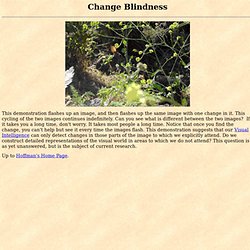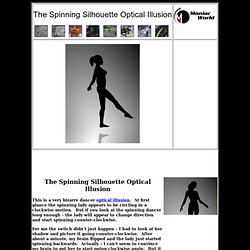

Sensory Breakdown Story. Reliability? Role of expectation or theory? Role of language? TOK Guide says... Change blindness demonstration. This demonstration flashes up an image, and then flashes up the same image with one change in it.

This cycling of the two images continues indefinitely. Can you see what is different between the two images? If it takes you a long time, don't worry. It takes most people a long time. Gradual Change Test 1. Derren Brown - Person Swap. Derren Brown - "Paying with Paper" The Core. I began my career as a hypnotist after developing an interest in the craft as a student, and, as I had little interest in earning a living as a therapist or making grown men dance like ballerinas, have since looked for more creative ways to incorporate hypnosis (overt or covert) and forms of suggestion, in my work.

I neither believe that hypnosis is anything magical, not that it can be entirely dismissed as role-playing or fakery. It seems to me that it is best understood as a process by which the subject allows herself to become highly responsive to the hypnotist, in a way similar to the responsiveness that we tend to exhibit when we go to a doctor or interact with most authority figures.
Likewise, it might be helpful to see the hypnotist as another authority figure, and a responsive subject as someone who has allowed herself to become very suggestible around him. More recently there two sides have found common ground, and the grey area in the middle is being explored. Writing Response. The Spinning Silhouette Optical Illusion. This is a very bizarre dancer optical illusion.

At first glance the spinning lady appears to be circling in a clockwise motion. But if you look at the spinning dancer long enough - the lady will appear to change direction and start spinning counter-clockwise. For me the switch didn't just happen - I had to look at her shadow and picture it going counter-clockwise. After about a minute, my brain flipped and the lady just started spinning backwards.